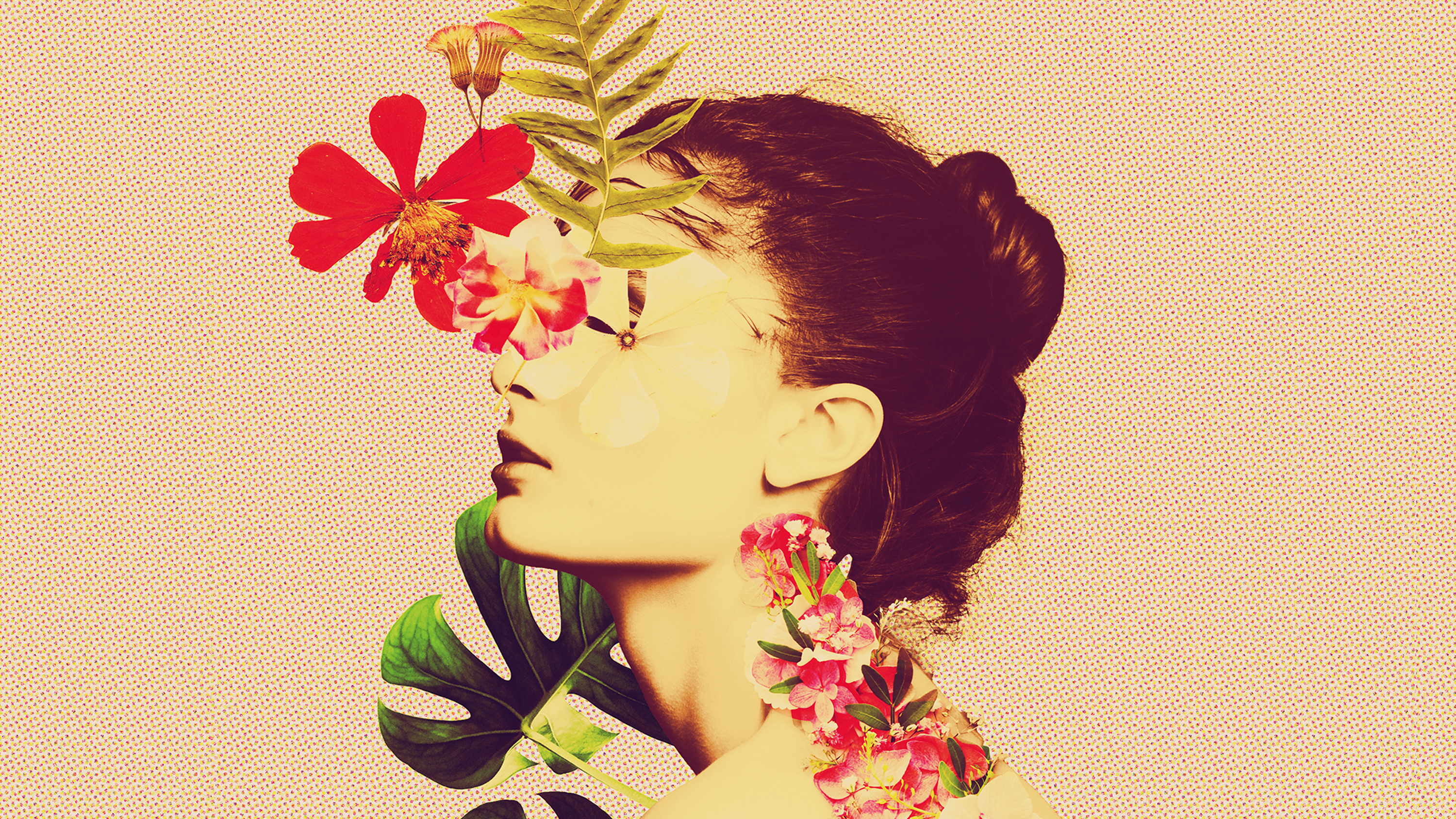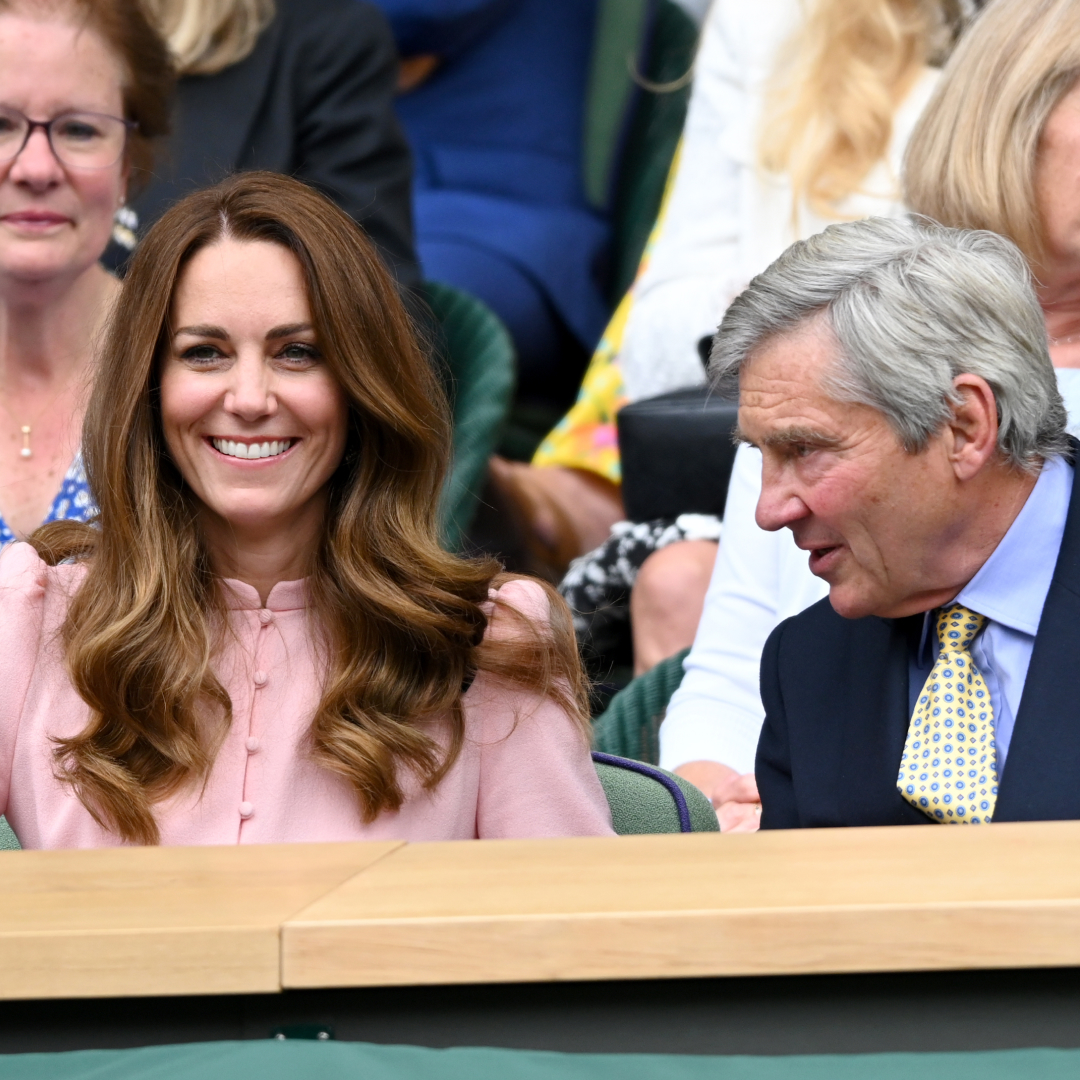Empowering From Within
A new, holistic approach to beauty is shaping the way we look good to feel good and feel good to look good.


Erin Hazelton was 37 years old when she discovered she had stage-two, invasive breast cancer. The diagnosis came as a total shock, and she knew she would be in for the fight of her life. What the writer did not expect was to lose everything she thought made her beautiful. “Like many women, I thought my beauty was defined by my long hair, my thick eyelashes and brows, my healthy skin, and my unmarred body,” she recalls. A love of makeup and luxury skincare fueled Hazelton’s interest in all the latest product launches and innovations, and for 20 years whenever she visited Paris she never missed a haircut appointment with celebrated stylist David Mallett. She tried her hand at laser treatments and peels at her dermatologist’s office, and she didn’t hesitate to spend big on Triple Crown Facials with Joanna Vargas. With her diagnosis, however, her once-cherished beauty practices were called into question. “I was devastated to learn my cancer treatment would rob me of all those things.”

But as her beloved locks fell out, her skin’s vibrancy diminished, and scars enveloped her body, Hazelton, much to her surprise, did not feel ugly, sickly, or unsexy. In fact, she felt more beautiful than ever. “My determination to live beamed out of me,” she says. “I was thrilled to be alive, to have a second shot at life.” While undergoing treatment—and in the years since she’s been declared cancer-free—Hazelton carried with her an important realization: As wonderful as makeup, haircare, and skincare could be, they were nothing without a sense of inner beauty. And while she may have come to this understanding through rather extreme circumstances, her newfound grasp on holistic beauty fits into a larger trend that’s shifting the beauty industry in a big way.
While what is deemed attractive has ebbed and flowed throughout history and continues to be deeply subjective, it has mostly remained only skin-deep. It’s the symmetry of your face, the smoothness of your skin, the sharpness of your cheekbones, and the length of your eyelashes. It’s the flatness of your stomach, the volume of your hair, and the straightness of your teeth.
Today’s youth are rejecting traditional beauty norms en masse.
In recent years, however, a new mindset has come to the fore, and the focus has shifted from looking good on the outside to feeling good on the inside. Thanks to a deeper awareness of mental health conditions and a sense of community fostered through social media, the stigma surrounding emotional disorders has significantly diminished, and that’s opened the door to more candid discussions on the subject. “I think that younger generations—millennials and Gen Z, for example—are much more focused on mental health and emotional wellbeing,” explains Dr. Evan Rieder, a double-board- certified dermatologist and psychiatrist in New York City.
“Our field has repeatedly made people, women especially, feel as though they need to conform to societal beauty standards that are impossible for most people to achieve,” he adds. “And the result of these standards for many has been disorders in mood, anxiety, eating, self-confidence, and body perception.”
But after witnessing the havoc that unrealistic beauty standards have wreaked on the mental health and self-esteem of the generations before them, today’s youth are rejecting traditional beauty norms en masse and demanding authenticity and transparency.
It’s not only traditional depictions of beauty—and their effect on mental health—that they’re rebuffing, though. It’s also the notion that outer beauty exists in a vacuum. “Previously, conversations about outer beauty (and the products used to achieve it) and inner beauty (and the mental and emotional aspects of it) were equally important in public discourse, albeit separate,” says Jennifer Hauser, the managing director of consumer health and wellness at Edelman. “But today, these conversations have merged, giving rise to a more inclusive and evolved definition of beauty as part of how we consider our overall wellness and wellbeing.”
Get exclusive access to fashion and beauty trends, hot-off-the-press celebrity news, and more.

For years, the wellness industry has stressed the link between inner and outer health, claiming that we can’t have the latter without the former. And although some skeptics have seen this as a mere marketing tactic, there is actually some logic to it. “Your appearance is a reflection of what’s going on inside,” notes Juhi Singh, a Chinese and ayurvedic medicine specialist, founder of The Juhi Ash Wellness Center in New York City and owner of Pure Essentials. “Every thought manifests on a cellular level, and your health is going to sag under the pressure of mental or emotional instability.”
And chief among the areas of the body affected are the ones most synonymous with physical beauty—skin and hair. “When you are under a lot of stress and anxiety, there are hormonal imbalances that can result in the body,” explains Dr. Deanne Mraz Robinson, a board-certified dermatologist in Westport, Connecticut. “These can impact everything from skin texture and tone to hair density, and can also trigger inflammatory conditions like acne, rosacea, and eczema.” In fact, according to one 2013 study published in the Indian Journal of Dermatology, an estimated one third of all patients in dermatology have emotional disorders, and it’s this connection that has given rise to psycho-dermatology, a new subspecialty that examines the link between emotional disorders and skin disease.
Similarly, when someone is feeling good mentally and emotionally, it shows externally. “Often when there are surges of positive neurotransmitters and hormones (e.g. oxytocin, serotonin, dopamine), the result can be positive mood, glowing skin, and even growing hair, and there is some preliminary evidence to support anti-inflammatory, anti-aging, healing, and circulatory effects on microscopic level,” says Dr. Rieder.
At the same time, it’s impossible to deny the impact that outer beauty can have on emotional wellbeing. From facials or appointments at the hair salon to nightly skincare routines or a simple swipe of a favorite lipstick, beauty rituals and practices can have a profound effect on our mood—and beauty brands and industry leaders know it. While companies have been harnessing emotion in their branding, marketing, and advertising for many years, it’s largely been a superficial attempt at best and a cheap marketing ploy at worst. But today, the industry seems to be catching on to the very real inner/outer beauty connection—both because of the increased research and information on it and because consumers are demanding it.
For LOUM Beauty cofounder Kat Bryce, the link was always clear, which is why it’s been at the very center of the business’s identity from the start. “We created LOUM Beauty because we saw the effect of stress on our own skin,” explains Bryce. “But it wasn’t until we started researching and discovered the science of psycho-dermatology (and 30 years of clinical studies linking the mind and skin) that we realized how fundamental the link was and how much impact we can have in skincare products in reducing the level of stress hormones in the skin.”
There is a very clear and well-established link between gut health and the state of the skin.
LOUM’s products are all made with its patent-pending Tri-Serene formula, which targets and reverses the impact of stress hormones, like cortisol and adrenaline, and effectively stops skin from experiencing the stress that users feel internally. And although the brand was an early adopter of the psycho-dermatological approach to skincare when it launched in 2020, it knows it won’t be the last.
We’ve also seen supplements, a category long relegated to the health and medical worlds, enter the beauty space. “There is a very clear and well- established link between gut health, the microbial balance within the GI tract, and the state of the skin,” says Felicity Evans, CEO and founder of the ingestible beauty brand IMBIBE Living. “Our first products formulated were inner beauty products designed to nurture your gut microbiome and support those with inner health issues which, as we have come to know, have a huge impact on your skin health and outer radiance. It always comes from within first.”
For other brands, it’s less about the scientific relationship between mental health and physical beauty and more about the abstract emotional effect that can come from beauty practices. “I believe intentioned moments of care and connection with the body can strengthen our powers of observation: What is my body telling me? How am I feeling?” says Kate McLeod, whose eponymous bodycare brand is famous for its moisturizing body stones. “Creating this pause is a powerful tool for emotional regulation and mental wellness.”
While consumers are hardly rejecting beauty products and treatments—in fact, both are booming—they now see them as part of a bigger picture. “People are realizing, not only with beauty but with health, that there is not a magical product, pill, or surgery that is going to fix the root cause of everything,” explains Dr. Jonathan Leary, the founder and CEO of Remedy Place, a social wellness club with locations in Los Angeles and New York City. “The future is self-care and prevention with a holistic approach.”
Where fear and pressure once governed the beauty industry, acceptance and inclusivity have taken their place. Products, treatments, and tools are
now enabling users to achieve their own version of beautiful. “Inner and outer beauty go hand in hand for me, and I think the holistic focus is empowering and encouraging,” says Dr. Rieder. “I think that this is changing for the better, and I think it’s here to stay.”
Shifting Perspective
As the connection between physical and mental wellbeing becomes more established, a handful of new brands have emerged with a mission to unify the two sides of beauty.

Gabby Shacknai is a longtime journalist covering beauty and wellness, travel, and consumer-facing business. Her work regularly explores the intersection of beauty and culture and has appeared in Allure, Forbes, Fortune, Harper's Bazaar, ELLE, and Women's Health, among other outlets. In addition to her freelance writing, she is the cofounder of Beautyfor, a sustainability nonprofit that mitigates product waste in the beauty industry, and pens a bi-weekly newsletter, The Gab Guide. When she's not busy working, Gabby can be found hiding behind a book or galavanting around New York with her goldendoodle, Alvy. You can follow her adventures on Instagram at @gabbyshacknai.
-
 Natalie Portman Proved, Once Again, That She's a Loyal Middle Part Supporter
Natalie Portman Proved, Once Again, That She's a Loyal Middle Part SupporterI know where she stands on the great debate.
-
 After That Cate Blanchett Cameo, Fans Are Wondering Whether an American Version of 'Squid Game' Is On the Way
After That Cate Blanchett Cameo, Fans Are Wondering Whether an American Version of 'Squid Game' Is On the WayIt seems like Netflix isn't giving up on its most-watched series just yet.
-
 Kate Middleton Had "Mortifying" Moment at Wimbledon
Kate Middleton Had "Mortifying" Moment at WimbledonThis is a little too relatable.


